Expo Shanghai 2010
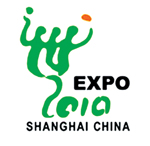 The 2010 World Exposition in Shanghai will last 184 days and provide China an opportunity to show off its remarkable economic growth and diversity. Officially known as “Expo Shanghai 2010,” the fair will give foreign nations and companies a chance to further develop business partnerships with China and Chinese companies. This ongoing series examines the Shanghai expo, from the construction of country pavilions to bilateral trade development between China and the rest of the world.
The 2010 World Exposition in Shanghai will last 184 days and provide China an opportunity to show off its remarkable economic growth and diversity. Officially known as “Expo Shanghai 2010,” the fair will give foreign nations and companies a chance to further develop business partnerships with China and Chinese companies. This ongoing series examines the Shanghai expo, from the construction of country pavilions to bilateral trade development between China and the rest of the world.
 The New Zealand Pavilion
The New Zealand Pavilion
May 21, 2010
The New Zealand government has spent US$30 million to translate this story into a pavilion to express the theme “Cities of Nature: Living between Land and Sky.”The 2,000 square foot pavilion is full of references to Maori culture, a nod to the indigenous peoples’ influence on New Zealand identity. Read the complete article
 The Vietnamese Pavilion
The Vietnamese Pavilion
May 19, 2010
Vietnam’s involvement with China’s Expo 2010 has a special significance compared to the other pavilions, as this year marks the 60th anniversary of political relations between the two countries. Their pavilion will center upon its capital city with the theme “1,000-year History of Hanoi.” Read the complete article
 The Pakistani Pavilion
The Pakistani Pavilion
May 17, 2010
With the theme “Harmony in Diversity,” the Pakistan pavilion promises to attract a crowd. Although the 2,000 square meter pavilion was constructed using modern technology and materials, it resembles the historical Lahore Fort landmark, a UNESCO World Heritage Site. Read the complete article
 The Bangladeshi Pavilion
The Bangladeshi Pavilion
May 7, 2010
Bangladesh was the 188th country to sign on and join Expo 2010 in Shanghai. Their joint pavilion measures 324 square and features the theme “Spirit and Growth of Golden Bengal.” The pavilion’s design highlights the blending of tradition and the future within the nation. Read the complete article
 The Russian Pavilion
The Russian Pavilion
May 3, 2010
With a long history of Expo participation, including the first World Expo in 1851 in London, Russia expects its Shanghai pavilion to attract a large number of visitors. The pavilion was heavily inspired by Soviet author Nikolai Nosov’s book “The Adventures of Dunno and His Friends.”Read the complete article
 The Chinese Pavilion
The Chinese Pavilion
May 1, 2010
Central to the historical significance of the Shanghai Expo is the Chinese national pavilion. The giant structure, named “The Crown of the East,” cost RMB1.5 billion and radiates a Forbidden City-red, towering 63 meters above the expo site, triple the height of any other pavilion. Read the complete article
 The Indian Pavilion
The Indian Pavilion
April 30, 2010
At the 2010 World Expo in Shanghai, India’s 4,000 square meter pavilion stands as a monument to its ability to forge a sense of harmony and national unity from this disparate society despite the contradictions and sometimes violent differences that naturally arise in such an environment. Read the complete article
 Iran, North Korea and Myanmar Pavilions
Iran, North Korea and Myanmar Pavilions
April 23, 2010
Expo Shanghai 2010, the largest world’s fair to date, will feature three participants who are not normally seen in diplomatically cordial situations, but all of whom have been in the news recently: the Islamic Republic of Iran, the Democratic People’s Republic of Korea, and the Union of Myanmar. Read the complete article
 The Nordic Lighthouse Project
The Nordic Lighthouse Project
March 26, 2010
The Nordic Lighthouse Project will take place in Shanghai from April 27 to October 31, 2010. What originally started as a Danish initiative has grown into a project involving participants from Norway, Sweden, Iceland and Finland. The Nordic Center at Fudan University is also playing an active role. Read the complete article
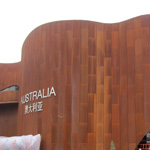 The Australian Pavilion
The Australian Pavilion
March 15, 2010
The Australian Pavilion’s theme is “Mastering the Challenges: Australia’s Smart Solutions for Our Urban Future.” By walking through the pavilion, visitors will learn about Australian culture and the importance of innovative and sustainable urban planning. Read the complete article
 The U.K. Pavilion
The U.K. Pavilion
March 12, 2010
The Seed Cathedral at Expo 2010 in Shanghai is hoping to stun visitors with its advanced, creative design the way the Crystal Palace did at the first World Expo in 1851. The pavilion is designed to highlight the United Kingdom’s long history of bringing nature into its cities. Read the complete article
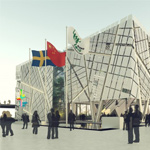 The Swedish Pavilion
The Swedish Pavilion
January 11, 2010
The Swedish Expo pavilion will be living up to the slogan “Sweden- Spirit of Innovation” when the exposition opens in May. It will focus on the Sweden’s innovative spirit and closeness to nature, highlighting the abilities to improve the urban environment with creativity and scientific knowledge. Read the complete article
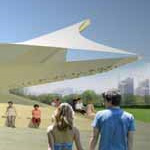 The Norwegian Pavilion
The Norwegian Pavilion
January 4, 2010
Last September the first of 15 trees was planted at the construction site of the Norwegian Expo Pavilion. The trees are to form the main part of the construction and were all in place by October after being shipped all the way from Moelven Limtræ AS in Norway to the Shanghai World Expo site. Read the complete article
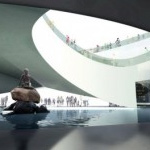 The Danish Pavilion
The Danish Pavilion
December 21, 2009
As the whole world tunes in for the World Expo 2010 next year, the statue of the famous Hans Christian Andersen fairytale, the Little Mermaid is set to arrive one month before the beginning of the Expo event to act as the crown jewel of the Danish Pavilion. Read the complete article
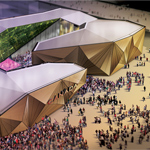 The Canadian Pavilion
The Canadian Pavilion
October 1, 2009
The Canadian Pavilion at world expos has always been a “must-see” among national pavilions, and the Canadian Pavilion at Expo 2010 should be no exception.The creative concept of the design was created by Cirque du Soleil, the major Montréal-based entertainment company. Read the complete article
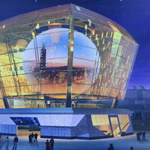 The Taiwan Pavilion
The Taiwan Pavilion
September 21, 2009
Since receiving the invitation only about four months ago, Taiwan is ready to participate in its first World Expo in four decades. The organizer of Taiwan’s participation and the contractor, the Taipei World Trade Center, signed its contract of participation with the Shanghai Expo organizer on July 21. Read the complete article
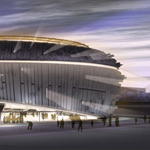 The Singapore Pavilion
The Singapore Pavilion
August 17, 2009
On June 7, the Singapore pavilion, called Urban Symphony, broke ground on an area of 3,000 square meters. The structure will showcase the uniqueness of Singapore’s urbanization and sustainability by showing a miniature version of the city-state when the Expo starts in 2010. Read the complete article
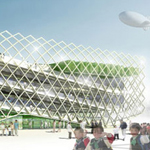 The French Pavilion
The French Pavilion
August 10, 2009
France was the first country to accept China’s invitation to join the World Expo 2010 and because of that was the first country to begin the construction of its pavilion called “Sensual City.” It will be built using the most advanced materials and environmental protection technology. Read the complete article
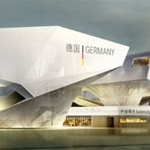 The German Pavilion
The German Pavilion
August 4, 2009
With a visitor capacity of 39,000 to 46,000 people per day, the German pavilion will be one of the larger structures at the expo. In relation to Shanghai Expo’s theme of “Better City, Better Life,” the German pavilion will present a balance between renewal and preservation. Read the complete article
 The American Pavilion
The American Pavilion
July 22, 2009
Late into 2009, there was speculation that the United States might not be able to participate at the World Expo 2010 because of lack of funds, but with funds secured in the final moments, a pavilion that focuses on four thematic pillars will be ready to open its doors in 2010. Read the complete article
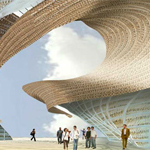 The Spanish Pavilion
The Spanish Pavilion
July 10, 2009
The Spanish Pavilion led by the design team Catalan EMBT Miralles-Tagliabue will be one of the largest pavilions during next year’s World Expo. The space spanning 7,000 square meters was inspired by wicker baskets, a handicraft deeply rooted in both Spain and China. Read the complete article
 Shanghai to Spend US$45 Billion on Expo
Shanghai to Spend US$45 Billion on Expo
May 31, 2009
Shanghai is sparing no expense to make the World Expo the most expensive one yet at US$45 billion, more than the money spent for the Beijing Olympics. The city is pushing through plans to upgrade infrastructure and build new transportation links. Read the complete article









